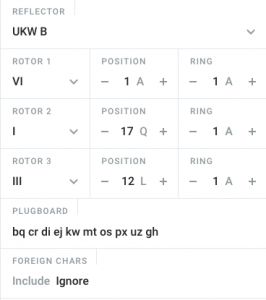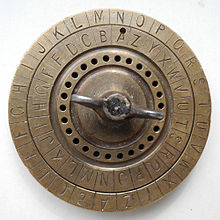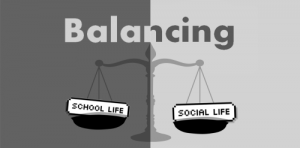Caesars Cypher
In cryptography, a Caesar cipher, also known as Caesar’s cipher, the shift cipher, Caesar’s code or Caesar shift, is one of the simplest and most widely known encryption techniques loans-cash.net. It is a type of substitution cipher in which each letter in the plaintext is replaced by a letter some fixed number of positions down the alphabet. For example, with a left shift of 3, D would be replaced by A, E would become B, and so on. The method is named after Julius Caesar, who used it in his private correspondence.[1]
The encryption step performed by a Caesar cipher is often incorporated as part of more complex schemes, such as the Vigenère cipher, and still has modern application in the ROT13 system. As with all single-alphabet substitution ciphers, the Caesar cipher is easily broken and in modern practice offers essentially no communications security.
The transformation can be represented by aligning two alphabets; the cipher alphabet is the plain alphabet rotated left or right by some number of positions. For instance, here is a Caesar cipher using a left rotation of three places, equivalent to a right shift of 23 (the shift parameter is used as the key):
| Plain | A | B | C | D | E | F | G | H | I | J | K | L | M | N | O | P | Q | R | S | T | U | V | W | X | Y | Z |
|---|---|---|---|---|---|---|---|---|---|---|---|---|---|---|---|---|---|---|---|---|---|---|---|---|---|---|
| Cipher | X | Y | Z | A | B | C | D | E | F | G | H | I | J | K | L | M | N | O | P | Q | R | S | T | U | V | W |
When encrypting, a person looks up each letter of the message in the “plain” line and writes down the corresponding letter in the “cipher” line.
Plaintext: THE QUICK BROWN FOX JUMPS OVER THE LAZY DOG Ciphertext: QEB NRFZH YOLTK CLU GRJMP LSBO QEB IXWV ALD
The Caesar cipher is named for Julius Caesar, who used an alphabet where decrypting would shift three letters to the left.
The Caesar cipher is named after Julius Caesar, who, according to Suetonius, used it with a shift of three (A becoming D when encrypting, and D becoming A when decrypting) to protect messages of military significance. While Caesar’s was the first recorded use of this scheme, other substitution ciphers are known to have been used earlier.[4][5]
“If he had anything confidential to say, he wrote it in cipher, that is, by so changing the order of the letters of the alphabet, that not a word could be made out. If anyone wishes to decipher these, and get at their meaning, he must substitute the fourth letter of the alphabet, namely D, for A, and so with the others.”
His nephew, Augustus, also used the cipher, but with a right shift of one, and it did not wrap around to the beginning of the alphabet:
“Whenever he wrote in cipher, he wrote B for A, C for B, and the rest of the letters on the same principle, using AA for Z.”
— Suetonius, Life of Augustus 88
Evidence exists that Julius Caesar also used more complicated systems,[6] and one writer, Aulus Gellius, refers to a (now lost) treatise on his ciphers:
“There is even a rather ingeniously written treatise by the grammarian Probus concerning the secret meaning of letters in the composition of Caesar’s epistles.”
— Aulus Gellius, Attic Nights 17.9.1–5
It is unknown how effective the Caesar cipher was at the time; there is no record at that time of any techniques for the solution of simple substitution ciphers. The earliest surviving records date to the 9th-century works of Al-Kindi in the Arab world with the discovery of frequency analysis.[7]
A Caesar cipher with a shift of one is used on the back of the mezuzah to encrypt the names of God. This may be a holdover from an earlier time when Jewish people were not allowed to have mezuzot. The letters of the cryptogram themselves comprise a religiously significant “divine name” which Orthodox belief holds keeps the forces of evil in check.[8]
In the 19th century, the personal advertisements section in newspapers would sometimes be used to exchange messages encrypted using simple cipher schemes. Kahn (1967) describes instances of lovers engaging in secret communications enciphered using the Caesar cipher in The Times.[9] Even as late as 1915, the Caesar cipher was in use: the Russian army employed it as a replacement for more complicated ciphers which had proved to be too difficult for their troops to master; German and Austrian cryptanalysts had little difficulty in decrypting their messages.[10]
for the relevance of this event the shift will we found by the following algorithm
input output
23 3
4011 2
10. -1
2000 -2
therefore the shift will be the output for 3301
next
ENIGMA MACHINE
Military Enigma machine, model “Enigma I”, used during the late 1930s and during the war; displayed at Museo Nazionale Scienza e Tecnologia Leonardo da Vinci, Milan, Italy
The Enigma machine is a cipher device developed and used in the early- to mid-20th century to protect commercial, diplomatic, and military communication. It was employed extensively by Nazi Germany during World War II, in all branches of the German military. The Enigma machine was considered so secure that it was used to encipher the most top-secret messages.[1]
The Enigma has an electromechanical rotor mechanism that scrambles the 26 letters of the alphabet. In typical use, one person enters text on the Enigma’s keyboard and another person writes down which of the 26 lights above the keyboard illuminated at each key press. If plain text is entered, the illuminated letters are the ciphertext. Entering ciphertext transforms it back into readable plaintext. The rotor mechanism changes the electrical connections between the keys and the lights with each keypress.
The security of the system depends on machine settings that were generally changed daily, based on secret key lists distributed in advance, and on other settings that were changed for each message. The receiving station would have to know and use the exact settings employed by the transmitting station to successfully decrypt a message.
While Nazi Germany introduced a series of improvements to the Enigma over the years, and these hampered decryption efforts, they did not prevent Poland from cracking the machine as early as December 1932 and reading messages prior to and into the war. Poland’s sharing of her achievements enabled the western Allies to exploit Enigma-enciphered messages as a major source of intelligence.[2] Many commentators say the flow of Ultra communications intelligence from the decrypting of Enigma, Lorenz, and other ciphers shortened the war substantially and may even have altered its outcome.[3]
History[edit]
The Enigma machine was invented by German engineer Arthur Scherbius at the end of World War I.[4] The German firm Scherbius & Ritter, co-founded by Scherbius, patented ideas for a cipher machine in 1918 and began marketing the finished product under the brand name Enigma in 1923, initially targeted at commercial markets.[5] Early models were used commercially from the early 1920s, and adopted by military and government services of several countries, most notably Nazi Germany before and during World War II.[6]
Several different Enigma models were produced, but the German military models, having a plugboard, were the most complex. Japanese and Italian models were also in use.[7] With its adoption (in slightly modified form) by the German Navy in 1926 and the German Army and Air Force soon after, the name Enigma became widely known in military circles. Pre-war German military planning emphasized fast, mobile forces and tactics, later known as blitzkrieg, which depend on radio communication for command and coordination. Since adversaries would likely intercept radio signals, messages had to be protected with secure encipherment. Compact and easily portable, the Enigma machine filled that need.
hint use the default enigma rotor values when you open any converter
.
.
.
the code is encrypted using first cesars cipher and then enigma cipher






